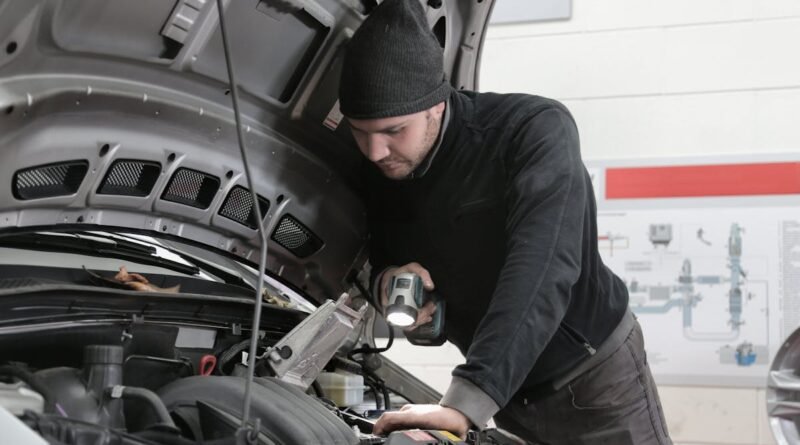15 preventive maintenance that should be done on your car
Buying your own car is many people’s dream. However, maintaining this asset can be challenging in different areas, and one of them concerns preventive maintenance.
And the reason for this is that, as the car is made up of several parts, you may be lost at first, especially if it is your first vehicle.
But in order to answer your questions and help you with this very important topic, which will guarantee your daily safety, we created this content!
So continue reading with us and understand everything about the main things you need to keep an eye on and changes to make to your vehicle to avoid major problems. Good reading!
To begin with, what is preventative maintenance and why is it important?
The first thing we must keep in mind concerns what preventive maintenance actually is .
This is the name given to the process of carrying out a review every given period and — if necessary — changing a part of the vehicle.
Whether you have a new or old automobile, it need maintenance on a regular basis.
In fact, the only thing that changes between a used car and a new one is the question of how long you have until the next trip to the workshop. Furthermore, vehicles are the same in this regard: they all need maintenance from time to time.
How often should I change something in the vehicle?
As a rule, there is nothing written in stone. After all, it is possible for any of the car’s systems or parts to suffer damage when running and, therefore, it is necessary to replace them first to avoid complications.
However, if you don’t want to wait until you hear noises or break down and need to stop the vehicle, you can use the following list as a basis:
- Tire alignment: 10 to 20 thousand km;
- Timing belt: 40 thousand to 100 thousand km;
- Alternator belt, air conditioning compressor belt and poly-v belt (water pump): next to the timing belt;
- Air filter: in conjunction with oil change;
- Anti-pollen or cabin filter: once a year;
- Fuel filter: every 20 thousand km;
- Oil filter: whenever you change the oil;
- Transmission fluid: 60 to 100 thousand km, or 2 to 4 years;
- Brake oil or brake fluid: within a period of six months to one year;
- Air conditioning cleaning: once a year;
- Coolant: every two years;
- Cleaning the cooling system: whenever you change the coolant;
- Lubricating oil: every 5 or 15 thousand km, depending on the type of oil and vehicle use;
- Tires: every 5 years;
- Spark plugs: between 15 and 100 thousand km driven.
Of course, this is an estimate, but whenever it’s close to the time for exchange, keep an eye on it to avoid problems and not take any risks, ok?
Is there another type of maintenance?
In both pre-owned and new and used cars , there is still the possibility that you will have to carry out corrective maintenance . This aims to repair problems caused by breakdowns.
It is important to know that it can be caused by natural wear and tear, incorrect use, falls or accidents.
In any case, if any item in the car breaks or stops working (either because you didn’t do the maintenance when it was due or for any other reason), it starts to be called corrective instead of preventive.
The big problem, however, is that in situations like this the chances of suffering or causing an accident increase wherever you are walking.
The tip, then, is to be as careful as possible with the vehicle and not skip trips to the automotive workshop at the correct times to avoid problems.
What to consider when taking it to the workshop
As we saw more specifically, and that’s why you can see that we mentioned more car maintenance in the previous subtitle, it is necessary to take the vehicle to the mechanic shop from time to time. But do you know why this is important?
In general, it is because the vehicle’s systems and parts may have faults that put your safety, as well as that of other drivers and pedestrians, at risk.
That’s why a car needs to be subjected to these processes constantly.
Therefore, to know exactly what you need to look at in the workshop (and now going more broadly, encompassing the systems in a single item when possible), see below with us:
Brake system
The brake is liable for halting the vehicle, however with steady use — and in some cases even wrong use, contingent upon the circumstance — this can think twice about plates, cushions, drums and different parts.
That is the reason it’s prescribed to have an examination and change something like one time per year.
Cooling
The car’s entire air system can be compromised and begin to no longer filter impurities over time.
This makes it necessary to clean and change components every 30,000 kilometers, on average.
Tires, alignment and balancing
It is a fact that, as we use them, the tires begin to wear out, becoming “bald”. This is where the need to change them every 5 years comes in.
But to avoid excessive corrosion, it is recommended to balance and align every 10,000 kilometers, in addition to rotating their position, ok?
car oil
This is one of the components with an exchange date established by the manufacturer, and applies to both the lubricating oil and the filter. The change must be done every 10 thousand km driven or six months.
If this is not done consistently, the engine may suffer damage due to excessive heating, leading to a scenario where it melts because it is so hot.
Another tip is to consult the manual to see when to change the gearbox and power steering oil in order to avoid problems.
Air filter
Done easily, cheaply and quickly, changing the air filter is highly recommended for the engine to function at its best and without excessive wear.
It is recommended to change it annually, but the period required for this may vary depending on your type of use.
As a basis: the more you use the vehicle, the shorter the time it takes to change the filter, as you put more strain on the engine (even when using it correctly).
engine spark plugs
You don’t have to wait until the spark plugs fail to replace them; even with “normal” use, they can be damaged!
As a result, it is advised that you adhere to the manufacturer’s change date (which varies by brand), which ranges between 15 and 100 thousand kilometers of use.
Fuel filter
This component prevents dirt from the tank from reaching the engine and, therefore, must be in excellent condition to avoid complications.
It must be replaced every 10 to 15 thousand kilometers for best efficacy and safety.
Conclusion
Regular preventative maintenance is vital for guaranteeing your car’s lifetime, performance, and safety. Adhering to the suggested maintenance plan might help you prevent costly repairs and potential mishaps. Regular inspections and replacements of important components such as tires, belts, filters, fluids, and spark plugs assist to avoid failures and ensure maximum vehicle operation.

